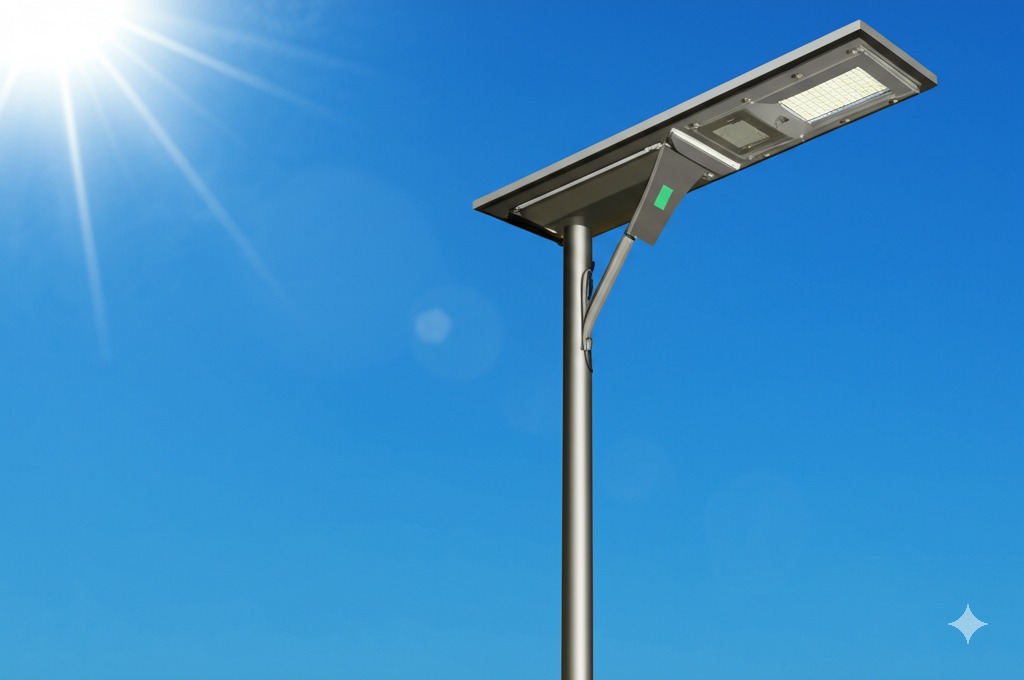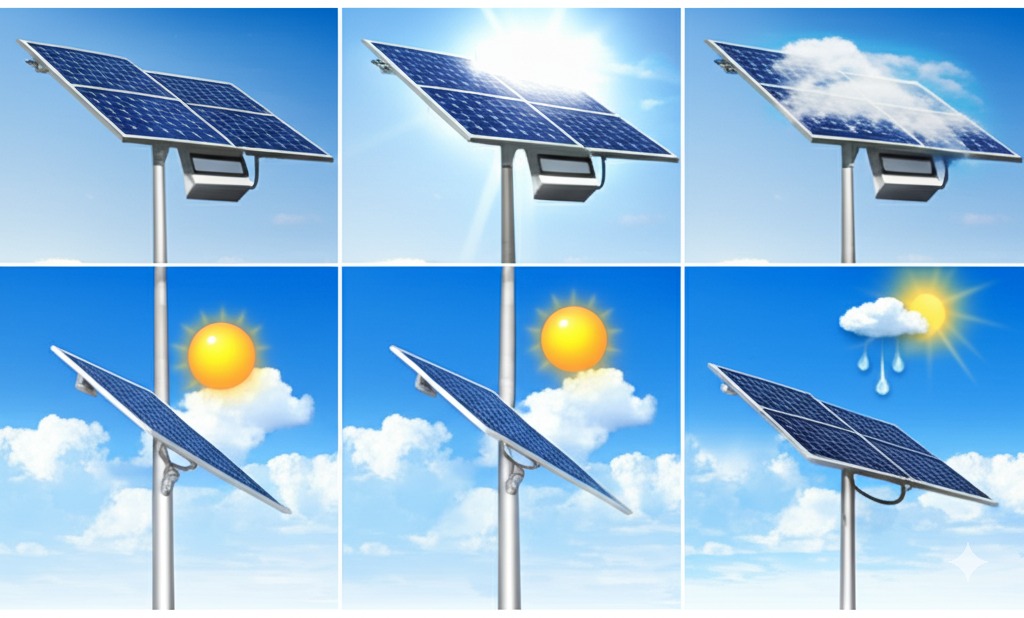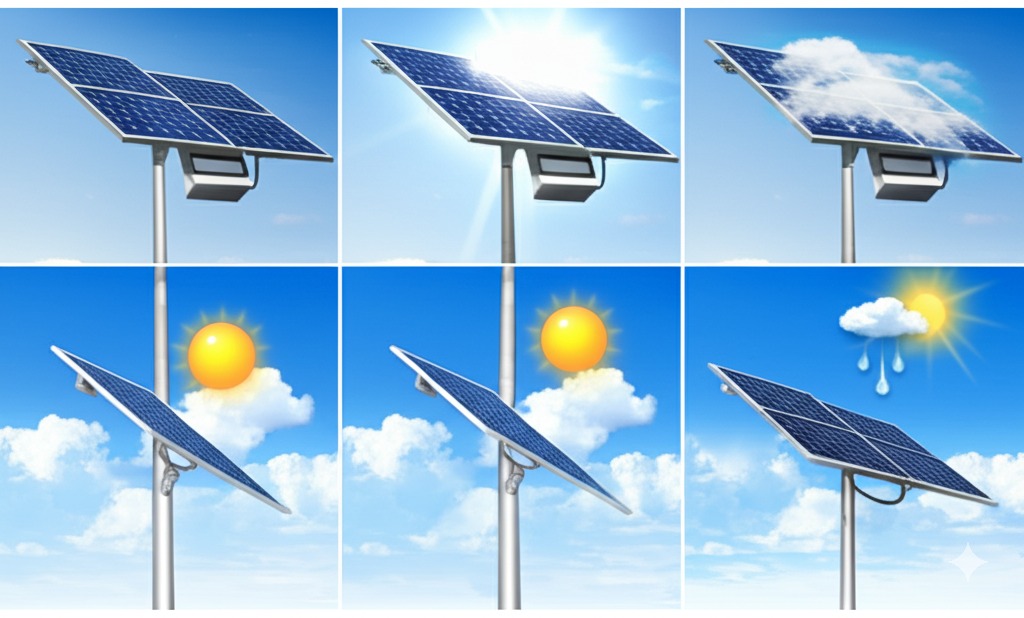Many wonder about the actual power output of solar street lights since they rely entirely on sunlight. The electricity generation depends on several key factors that determine their effectiveness. Understanding these factors helps in selecting the right system for specific lighting needs.
A typical solar street light generates 60-200 watt-hours per day, enough to power LED lights for 8-12 hours nightly. The exact amount depends on solar panel size, sunlight availability, and system efficiency. This generation capacity meets most residential and commercial lighting requirements.

Let's examine the details of solar street light electricity generation and what affects their performance in different conditions and locations.
What Determines a Solar Street Light's Power Generation?
Multiple technical specifications and environmental factors influence how much electricity a solar street light can produce. Understanding them helps set realistic expectations.
Key determinants include: solar panel wattage (30W-100W), battery capacity (12V/20Ah-12V/100Ah), sunlight hours (4-8 peak hours/day), and system efficiency (85%-95%). These variables work together to determine total daily energy production.

Detailed Power Generation Factors:
| Factor | Typical Range | Impact on Generation |
|---|---|---|
| Panel Wattage | 30W-100W | Higher wattage = more power |
| Sunlight Hours | 4-8 peak hours | More sun = greater charging |
| Panel Efficiency | 18%-22% | Better efficiency = more output |
| System Losses | 5%-15% | Lower losses = higher usable power |
| Temperature | -20°C to 60°C | High temps reduce efficiency |
| Angle/Tilt | 15°-45° | Proper angle improves absorption |
From our manufacturing experience, we've found panel orientation and local weather patterns often make more difference than small variations in panel size. A properly angled 50W panel frequently outperforms a poorly positioned 80W panel.
How Is the Generated Electricity Calculated?
The actual electricity produced follows predictable calculations when accounting for all system parameters. These formulas help estimate realistic outputs.
Daily generation (Wh) = Panel wattage (W) × Peak sun hours × System efficiency (usually 0.85). For example: A 60W panel with 5 sun hours at 85% efficiency produces 255Wh daily (60×5×0.85=255Wh).**

Solar Generation Calculation Steps:
-
Determine Panel Specifications
- Rated power (e.g., 60W)
- Efficiency (e.g., 20%)
- Physical size (affects installation)
-
Find Local Sun Data
- Peak sunlight hours (varies by location)
- Seasonal variations data
- Historical weather patterns
-
Calculate Theoretical Maximum
- 60W panel × 5 hours = 300Wh potential
- Doesn't account for real-world losses
-
Apply Efficiency Factors
- Temperature losses (5-10%)
- Dust/dirt on panel (3-5%)
- System conversion losses (5-10%)
-
Final Realistic Estimate
- 300Wh × 85% efficiency = 255Wh
- Enough for 10W LED for 25 hours
Our production records show reliable systems typically achieve 80-90% of their calculated potential when properly installed and maintained. Regular cleaning and battery care can maintain this efficiency for years.
How Does Weather Affect Electricity Production?
Weather conditions significantly impact actual power generation, making some locations better suited than others. Planning for these variations ensures reliable performance.
Cloudy conditions can reduce output by 30-70%, while winter months with shorter days may cut generation by 40-50% compared to summer peaks. Quality systems compensate with smart battery management and efficient LEDs.

Weather Impact Analysis:
-
Sunny Conditions (Optimal)
- 100% rated output
- Batteries charge fully by midday
- Possible excess energy generation
-
Partly Cloudy (Moderate Impact)
- 60-80% of rated output
- Longer charging time required
- May need to reduce light duration
-
Heavy Clouds (Significant Impact)
- 30-50% of rated output
- Batteries may not fully charge
- Automatic brightness reduction
-
Rainy/Snowy Days (Maximum Impact)
- 10-30% of rated output
- Requires battery reserves
- May activate power-saving modes
After supplying solar lights to 60+ countries, we've observed that systems with 20-30% extra capacity handle weather variations best. Three days of autonomy (stored power) is the industry standard for reliable operation.
Conclusion
Solar street lights generate sufficient electricity for nightly lighting when properly sized, typically producing 60-200Wh daily depending on components and location conditions. Smart design compensates for weather and seasonal variations.

